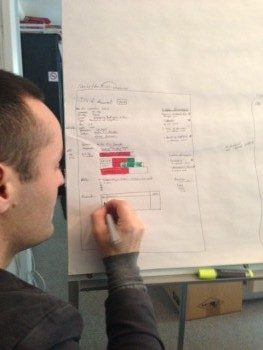Our vision of available and well-accessible human rights case law is becoming reality, as HURIDOCS and CEJIL met last week to bring the work for the Americas to a new level. From July 2013 on, a first version will be ready, including 240 selected cases with 1,600 decisions from both the Inter-American Court and Commission. It will be a landmark database that will be the first to bring together the decisions of both bodies, making the work of human rights lawyers considerably easier, while also allowing the public and rights groups to monitor and visualize State performance in complying with Court judgements. A first prototype can be accessed at cejil.huriweb.org (Editor’s note on 10 December 2020, the prototype is no longer active, but the database has been launched).

The project is a major part of our vision to create an interconnected network of databases for all human rights case law. For this we are working with strong partners, with CEJIL providing its expertise on the Inter-American human rights system, and Ketse.com providing the usual excellence and innovation in terms of technology. For IHRDA in Africa, we already realised the African Human Rights Case Law Analyser that includes almost all case law of the African Commission and Court, and in the foreseeable future will include all the human rights-related decisions of the other African regional courts. Oleg Burlaca also created a prototype for the European Court of Human Rights that provides an alternative to the ECHR’s own HUDOC search, with advanced functions to analyse jurisprudence based on citations.
Inter-American system: not easily accessible
Case law is an important part of every legal system, as decisions on admissibility and judgements set precedents and trends for future work of the courts and bodies that make them. It is essential for human rights lawyers to be able to find the right jurisprudence quickly, to give the right advice to clients and make the best arguments in court. Yet, to date, most courts or bodies make it available in a way that is only to the small handful of experts who already know exactly what they are looking for.
The Inter-American Court and Commission are a case in point. As both bodies regularly make decisions on the same case, these decisions for a case are to date found in two different databases. Also, they are not indexed and browsable by human rights standards or keywords. Even finding all cases relating to a particular country is challenging.
How the case law will be organised
This is a situation that is going to be changed. All documents belonging to one case will be linked and they will be made available through a variety of mechanisms, among these an advanced faceted browsing search. A faceted browsing search is one where the user does not have to build a query, but can also intuitively access the data by ticking boxes, such as the year, theme or country involved in the case. An example of a faceted browsing search implemented by HURIDOCS is the advanced document search of the International Commission for Jurists.
In the week that CEJIL and HURIDOCS spent working together, the nitty-gritty details of making a well-accessible case law database where discussed. CEJIL have a thorough understanding of the case law and of the people who will be using the database, whereas HURIDOCS and Burlaca.com thrust in their knowledge of information architecture and human rights documentation.
Drawing the details

What may appear cumbersome at times – every single format, every single field, every single page template has discussed intensely – was an important step to make sure that the database will both cater for its users needs and adhere to standards of organising information. Many decisions had to be made: What is too much information? What is too little? Which information can be linked? What is really useful? What merely a gimmick?
We hope and are confident that the final result will strike a balance between what is possible, what is important and what is too much. Human rights case law is important information, and thus deserves to be made available and accessible to all. So that lawyers can focus on giving advice and sharpening their argument, citizens can find out about their governments and rights groups can focus on campaigns and not on gathering the data.
Information can be key, and in human rights this is more true than in other fields. This new database will make fining the right jurisprudence as easy as a mouse-click. In this sense, we are democratising knowledge.
When will it be ready?
On 1 July 2013: launch of Version 1
- 240 selected cases with 1600 decisions from both the Inter-American Court and Commission:
- Full text search and faceted navigation by country, year, keywords, and status.
- Case summary page, with all the decisions for that case, whether from Court or Commission.
- Online reading window for each decision, with table of contents allowing to jump to specific sections of the document.
- Spanish / English / Portuguese interface for easy browsing in these languages.
On 1 July 2014: launch of Version 2
- Find specific paragraphs relating to a particular keyword or combination of keywords (for example right to life in the context of refugees), making jurisprudential research very easy.
- Visualize the implementation of the remedies contained in the judgements, at the level of the case and at the level of the State, based on the Court’s decisions on compliance.
- Bookmark and comment particular cases, decisions, or paragraphs, for easy saving of caselaw research.
